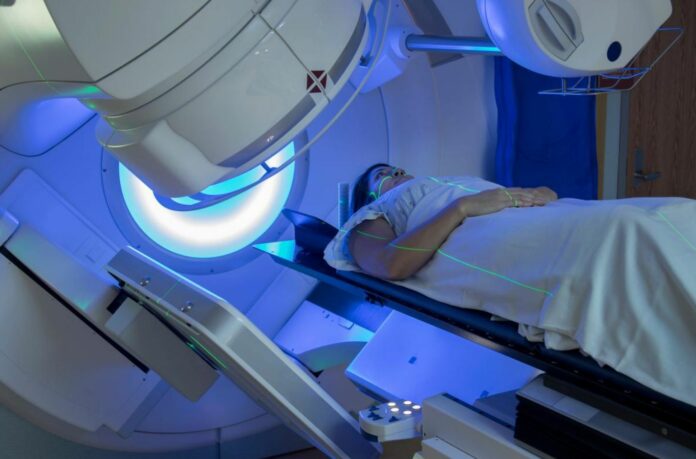Breakthrough in Cancer Research: A new study reveals the earliest stages associated with future cancer development in humans.
Researchers at Stanford Medicine have discovered that the origin story of cancer follows a predictable plot line. They found that cells on the path to becoming cancerous undergo a series of specific genetic changes in a sequential manner, long before any visible signs or symptoms emerge. These genetic alterations primarily affect pathways controlling cell division, structure, and internal communication, setting the stage for the cells to turn malignant.
This groundbreaking study is the first to comprehensively observe the natural progression of early-stage human cancers, starting from cells with a single cancer-triggering mutation and culminating in a panel of descendants harboring a multitude of genetic abnormalities.
By identifying the initial steps associated with future cancer development, the researchers believe it is possible to achieve earlier diagnosis, potentially intercepting the disease before it becomes deadly. Moreover, this knowledge could unveil novel interventions to halt cancer in its tracks.
“Ideally, we would find ways to intercept this progression before the cells become truly cancerous. Can we identify a minimal constellation of genetic alterations that imply the cell will progress? And, if so, can we intervene? The striking reproducibility in the genetic changes we observed from multiple donors suggests it’s possible,” said Professor Christina Curtis, the senior author of the research.
The study, published in Nature, was led by former postdoctoral scholar Dr. Kasper Karlsson and visiting graduate student Moritz Przybilla.
Cells with Sinister Beginnings
This research builds upon previous work in Curtis’s lab, which indicated that certain colon cancer cells possess the ability to metastasize long before the disease becomes detectable.
“Our studies of established tumors showed us that early genomic alterations seem to dictate what happens later, and that many of these changes seem to happen before tumor formation,” Curtis explained. “We wanted to know what happens at the very earliest stages. How does a cancer cell evolve, and is this evolutionary path repeatable? If we start with a given set of conditions, will we get the same result in every case?”
To explore these questions, the researchers examined tiny three-dimensional clusters of human stomach cells known as gastric organoids. These cells were obtained from patients undergoing gastric bypass surgery for obesity treatment.
At the start of the study, the researchers induced the cells to progress toward cancer by disabling the production of a crucial cancer-related protein called p53, which regulates cell division frequency. Mutations in p53 are recognized as early events in many human cancers, triggering the accumulation of additional genetic changes, including mutations and alterations in the number of copies of specific regions of the genome during cell division.
The Waiting Game
Subsequently, the team patiently observed the dividing cells for two years, documenting the genetic changes that occurred every two weeks. Upon analyzing the data, Karlsson and Przybilla discovered that while changes happened randomly, those conferring greater fitness bestowed an evolutionary advantage upon the host cells compared to other cells in the organoid. As the cells continued to divide and the cycle of mutation and competition repeated itself over numerous iterations, the researchers identified common themes.
New Pathways
They observed “reproducible patterns.”
“Certain regions of the genome are consistently lost very early after the initial inactivation of p53. This was repeatedly seen in cells from independent experiments with the same donor and across donors,” Curtis revealed.
“This indicates that these changes are cell-intrinsic, that they are hardwired into tumor evolution. At the same time, these cells and organoids appear mostly normal under the microscope. They have not yet progressed to a cancer.”
They found that these early changes frequently occurred in biological pathways that regulate cell division frequency, disrupt a cell’s intricate internal signaling network (which coordinates the numerous steps required for its smooth operation), or control cell structure and polarity—the cell’s ability to differentiate “up” from “down” and position itself with respect to neighboring cells to form functional tissue.
Similar patterns were observed repeatedly in cells from various donors. Like water following established paths into dry creek beds, the cells followed tried-and-true trajectories, gaining momentum with each additional genetic change. Several of these changes mirrored mutations previously observed in stomach cancer and Barrett’s esophagus, a pre-cancerous condition affecting cells lining the colon and stomach.
“These changes occur in a stereotyped manner that suggest constraints in the system,” Curtis noted. “There’s a degree of predictability at the genomic level and even more so at the transcriptomic level—in the biological pathways that are affected—that gives insights into how these cancers arise.”
Curtis and colleagues plan to replicate the study using different cell types and initiating events unrelated to p53 mutations.
“We’re trying to understand exactly what malignant transformation is,” Curtis added.
“What does it mean to catch these cells in the act, about to topple over the edge? We’d like to repeat this study with other tissue types and initiating mutations so we can understand the early genetic events that occur in different organs.
“And we’d like to study the interplay between the host and the environment. Do inflammatory factors play a role in promoting progression? We know that it matters that the cells in these organoids are communicating with each other, and that is important to understanding progression and treatment response.”
Contributors to this study include researchers from Karolinska Institutet, University College London, and the Chan Zuckerberg Biohub.
Image Credit: Shutterstock
